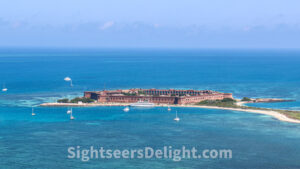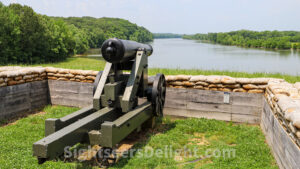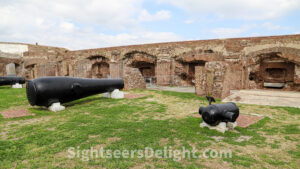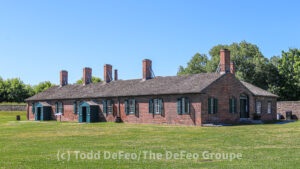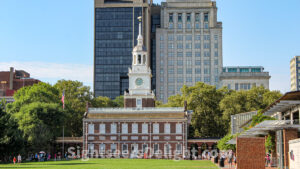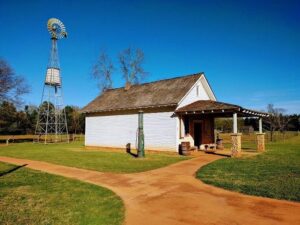Dry Tortugas National Park, situated about 68 miles west of Key West, preserves Fort Jefferson and the seven Dry Tortugas islands, the westernmost and most isolated Florida Keys. Fort Jefferson, a massive but unfinished coastal fortress, is the largest brick masonry structure in the Western Hemisphere and includes more than 16 million bricks. The park, accessible by seaplane and boat, is popular for its abundant sea life, tropical bird breeding grounds and colorful coral reefs. Dry Tortugas National Park is part of the Everglades & Dry Tortugas Biosphere Reserve, which UNESCO established in 1976 under its Man and the Biosphere Programme.
Everglades National Park was dedicated in Everglades City, Florida, on Dec. 6, 1947. It is famous for its unique ecosystem: wetlands, sawgrass marshes, cypress swamps, and mangrove forests. It is home to a diverse array of plant and animal species, including endangered species like the Florida panther and the manatee and rare species like the American crocodile. Visitors can explore the park’s many hiking trails, canoe and kayak along its waterways, take an airboat tour, or participate in ranger-led programs and educational activities. The park is also a popular destination for birdwatching, fishing, and camping.
This post incorporates text generated with GPT-3, OpenAI’s large-scale language-generation model.
33034
Fort Donelson National Battlefield preserves the resources of and tells the stories of the 1862 campaign and battles for Forts Henry, Heiman, and Donelson, and the opening of the Tennessee and Cumberland Rivers. The national park includes Fort Donelson National Cemetery, established in 1867, as the final resting for Union soldiers and sailors initially buried in the Fort Donelson area. It contains the remains of 670 Civil War burials and roughly 909 veterans from other wars. Dover Hotel, the Surrender House, was built between 1851 and 1853 and served riverboat travelers before and after the Civil War. Confederate Brig. General Simon B. Buckner and his staff used the hotel as their headquarters during the battle. Buckner surrendered to Union Gen. Ulysses S. Grant in the hotel.
37058
James Oglethorpe established Fort Frederica on what is today St. Simons Island in 1736, just three years after he founded Georgia.. The goal of the settlement was to to protect the southern boundary of the British colony of Georgia from the Spanish. At times, more than 600 British troops were stationed at the fort. A visitor to the fort in 1745 described it as “a pretty strong fort of tabby,” noting the structure was “surrounded by a quadrangular rampart, with four bastions of earth well stocked and turned, and a palisade ditch.” During the battles of Bloody Marsh and Gully Hole Creek in 1742, Oglethorpe’s successfully repulsed Spanish attempts to invade St. Simons Island.
31522
Fort Sumter is a sea fort built on an artificial island near Charleston, South Carolina to defend the region from a naval invasion. It was built after British forces captured and occupied Washington during the War of 1812 via a naval attack.
29412
British Army and Canadian militia troops built Fort York during the late 18th and early 19th centuries. Their goal was to defend what was then the settlement of York from a potential military attack from their southern neighbors. Despite the military presence, we attacked in 1813 and burned part of York, including the Parliament Building. The British retaliated the following year and burned the White House. It was designated a National Historic Site in 1923, and Toronto designated it a Heritage Conservation District in 1985.
The General Grant National Memorial is the final resting place of President Ulysses S. Grant and his wife, Julia. The memorial is the largest mausoleum in North America and honors the man who credited with ending the bloodiest conflict in American history as Commanding General of the Union Army. After his Presidency, Grant settled in New York City and died of throat cancer on July 23, 1885. He was laid to rest in New York City on Aug. 8, 1885. More than a million people attended the parade and dedication ceremony of Grant’s Tomb on April 27, 1897.
10027
Haleakalā National Park is perhaps the crown jewel of Maui. The 33,265-acre national park is a popular destination for tourists wanting to watch the sunrise on the island, even though clouds often obscure the view. At the center of the park is the dormant Haleakalā (East Maui) Volcano. The volcano last erupted more than 400 years ago, likely between 1480 and 1600 AD.
Independence Hall, the centerpiece of Independence National Historical Park, is where the Founding Fathers signed the Declaration of Independence in 1776. Inside the building nearly a dozen years later, in 1787, they laid the framework for the U.S. Constitution. Today, the historic edifice is the centerpiece of Independence National Historical Park. A guided tour of the building brings to life the many events that happened inside the building’s four walls that shaped the country’s early history.
19106
The Jimmy Carter National Historic Site in Plains, Ga., includes sites related to President Jimmy Carter. The site includes his boyhood farm, his former school and the town railroad depot, which served as his campaign headquarters during the 1976 election. Carter, the 39th President of the United States, was born in 1924 in Plains and still lives in the small town.

